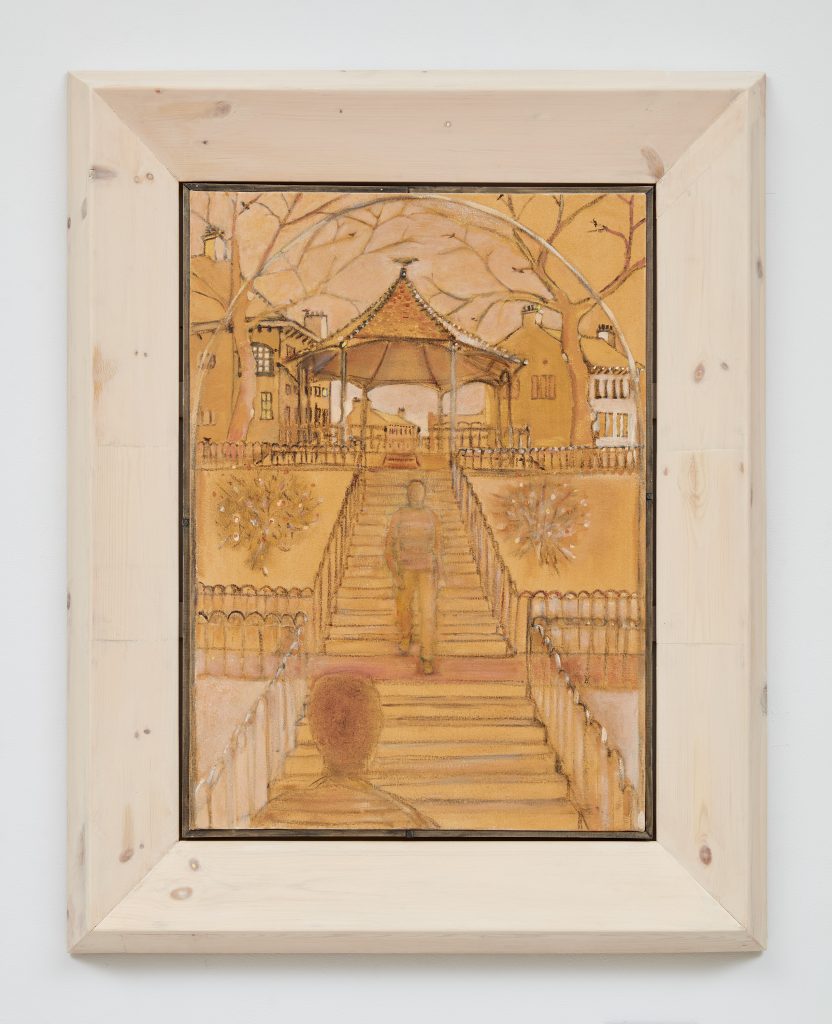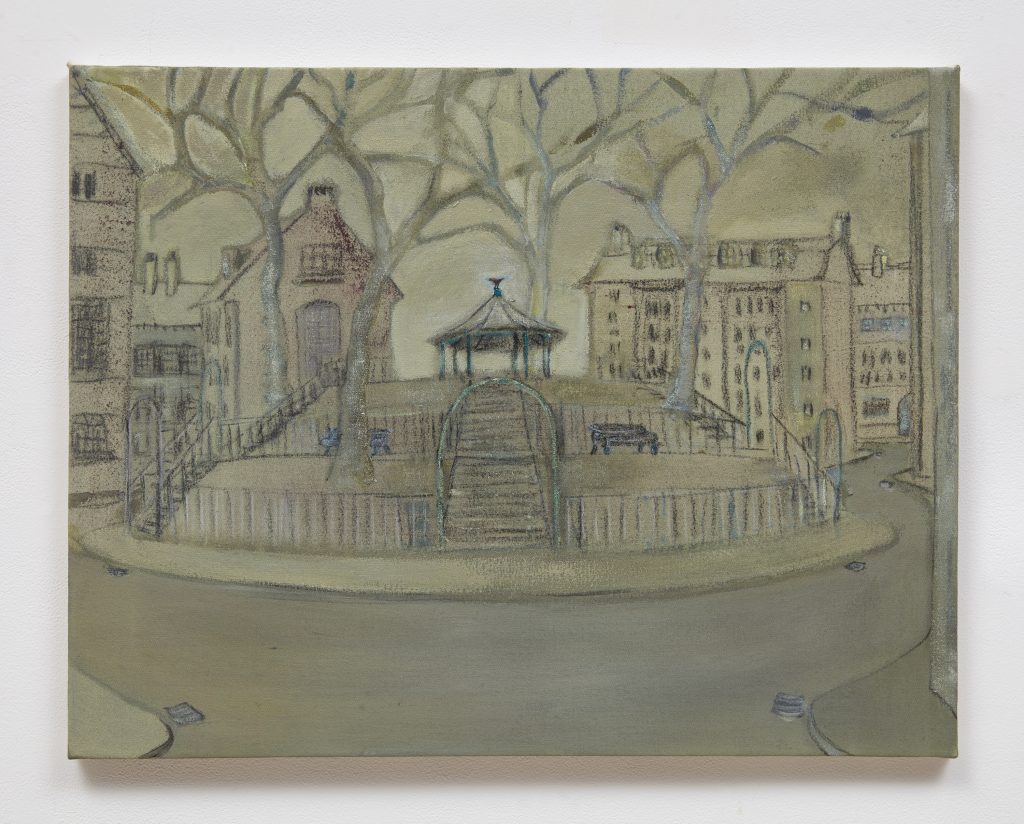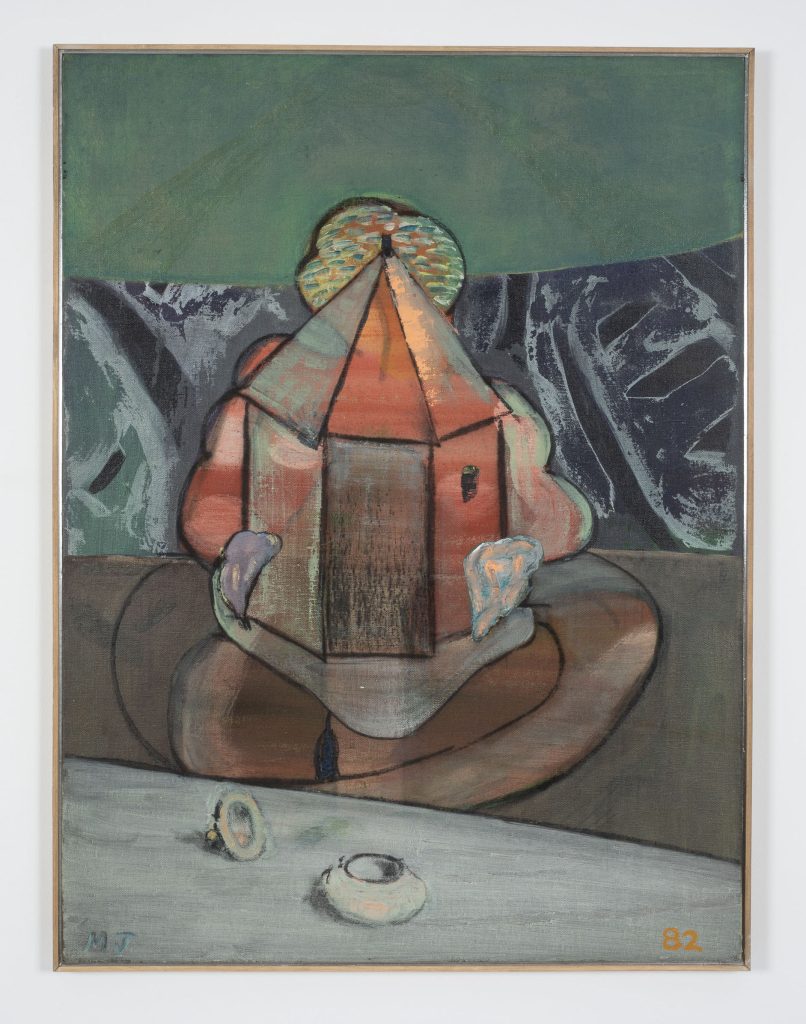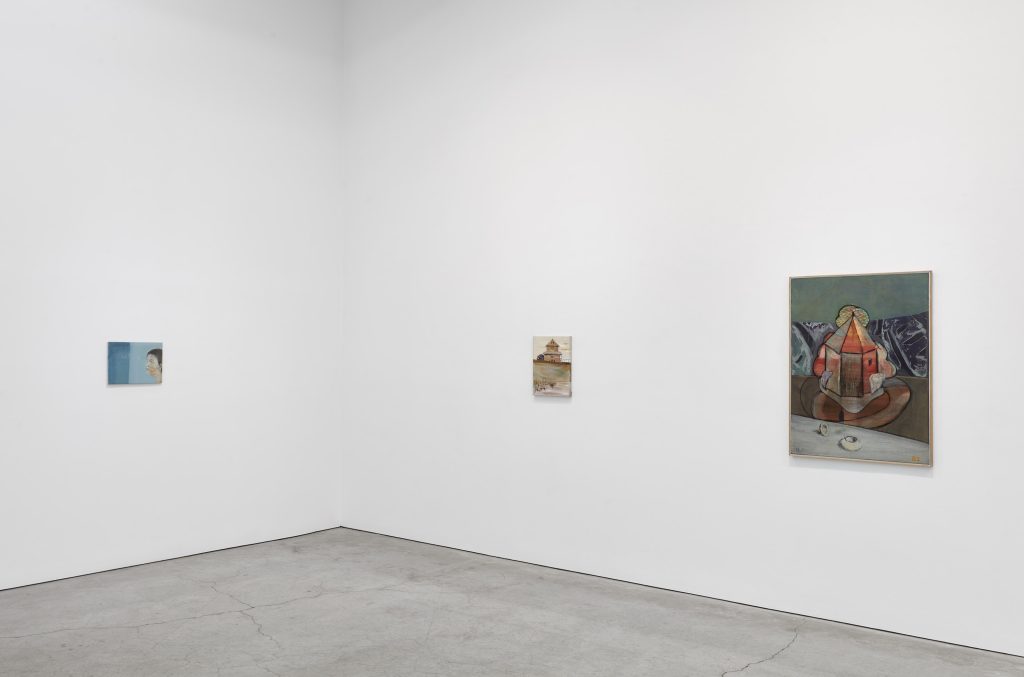Glasgow-based artist Merlin James’ paintings in a new, engrossing exhibition called “Hobby Horse” at Sikkema Malloy Jenkins in New York City suggest a process of images’ self-actualization that’s reflective of but separate from the materialized environments — ostensibly precise in their contours — in which they start.
Viewed through James’ handling, perhaps the process of images’ growth passes through whatever we’re mentally or physically perceiving but starts somewhere further, reflective of and carrying a fundamental disconnect, or at least a tangible impermanence. Here, the fleeting nature of picturing a place, including what’s done when you’re standing in front of it and amid it — actually looking at it — becomes embedded into the particularities and experience of the mind’s image. Image becomes not gospel but a cloud floating across our perception… and drifting across the surface of James’ artworks.
His artworks tended to be recognizable in form but unfixed in specifics, portions of a cognizable environment blending into each other or into nothing particularly precise at all… though still something poignant and embracing. The color schemes in James’ exhibited artworks operated similarly; they were sensory, but not what we’d recognize as an attempt at photo realism. “Bandstand (Meeting)” (2024) is, for instance, awash in shimmering, lightly heated orange.
It was all the transformation of an imagined scene into an image of itself on top of itself. One of the artworks, “Estuary” (2024), gets particularly sparse in specific detail, seeming suggestive of how the specifics might fade in our experience and recollection of a big, sweeping environment in the actual, physical world.
We know the space is there, and we know it’s inhabited, or at least leans that way. There and in these artworks, there are arriving and resounding waves of the sublime, present, and animating in the mere interconnection of space, in the formulation of an image that it posits. I remember — or merely imagine! — these places, and that’s enough. There’s something propelling there, and James’ artwork emphatically circles that. It feels as much a depiction of space and the negotiation of it as it is a depiction of anything specific.
Space, an environment in which to immerse, feels fleeting and interactive — relational! — across much of James’ artwork, moving inwards or outwards in unison, layers of it existing in contrast but with one another. A press release from the gallery talks about a parallel of painting with the idea of a “hobby horse,” positioning painting as a reflection, an encapsulation. And I think the art also puts that kind of idea on the actual content that it holds.
Space, plus whatever lies behind it and beyond it, outlines and leads towards the creation of an image of it and the process of moving as a person through it, with that image in turn becoming a key framework for viewing and inhabiting the space at all. Simultaneously, the image becomes something separate from the scientifically specific, taxonomical details of the place itself. We’re instead within the images.
In this art, I feel it and myself clinging to those images. In their expressed slippage and permeability, in the way in which they feel like they were fleeting before I looked at them via a process of blending with themselves individually and collectively that continues now like an old and aging videotape on repeat, the images presented in each scene become a memento, an imprint, a recollection that itself is looking at you, waiting for the next time you return, as though you’re an image. In the art, this cascade of images becomes a place to live, to inhabit. They feel fleeting, like the past already in the past, but a dwelling, pointing both towards themselves and to you.
The light of a real world place isn’t here, but you somehow feel that it visited, and there’s something of it left behind: a mirror image taking on a life of its own. We live within our images, speaking a stringing language of space and times we’ve never lived as we imagine them, as the present is gone in the time that it takes you to consider it… yet in its never-ending fading away, it continues and constructs a bandstand, a waterway, and a backyard. We get something to hold.
James’ exhibition continues through Saturday, April 5, at Sikkema Malloy Jenkins.



Featured image: Installation view of Merlin James: Hobby Horse, 2025, Sikkema Malloy Jenkins, New York, NY. Photo by Jason Wyche. Courtesy of Sikkema Malloy Jenkins.
You may also like
-
Diana Kurz at Lincoln Glenn in New York: A Review of a Shining Art Exhibition
-
Dustin Hodges at 15 Orient in New York City: An Ensnaring Exhibition at an Exciting Gallery
-
Maren Hassinger at Susan Inglett Gallery in New York: Reviewing an Uplifting Art Exhibition
-
Enzo Shalom at Bortolami in New York City: Reviewing an Entrancing Exhibition of Paintings
-
“Ben Werther: Townworld” at Amanita in New York City: Reviewing a Richly Memorable Art Exhibition
